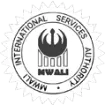1. Build Your Knowledge Base: Understanding the Fundamentals
Before venturing into any financial market, building a strong knowledge base is crucial. Here's where to begin:
- Commodities 101: Grasp the core concepts of commodities, including different types (energy, metals, agricultural), their roles in various industries, and factors influencing their prices (supply & demand, economic growth, weather).
- Market Analysis Techniques: Explore technical analysis tools like charts, indicators, and trend lines to identify potential entry and exit points for your trades. Familiarize yourself with fundamental analysis, focusing on economic data, central bank policies, and geopolitical events impacting commodity prices.
- Trading Terminology: Understanding terms like futures contracts, options, margin, leverage, and spread is essential for navigating the world of commodity trading effectively.
Numerous resources are available to bolster your commodity trading knowledge, including online courses, educational videos, financial websites dedicated to commodities, and books written by experienced commodity traders.
2. Choose a Reliable Broker: A Secure Foundation for Your Trading
Selecting a reputable and regulated broker is paramount for a secure and smooth trading experience. Consider the following factors:
- Regulation: Ensure the broker is licensed by a recognized financial authority to safeguard your funds and trading activities.
- Trading Platform: Evaluate the user-friendliness, features, and research tools offered by the broker's trading platform. Look for platforms specifically designed for commodity trading.
- Account Types: Choose an account type that aligns with your experience level and risk tolerance. Many brokers offer demo accounts with virtual funds to practice trading before committing real capital.
- Fees and Commissions: Compare spreads, commissions, and other fees associated with trading specific commodities on different platforms. Choose a broker with competitive fees to optimize your profitability.
- Customer Support: Responsive and reliable customer support is essential for addressing any inquiries or troubleshooting needs you may encounter.
3. Develop a Tailored Trading Strategy: Your Roadmap to Success
A well-defined trading strategy acts as your roadmap in the commodity market. Here are some key aspects to consider:
- Trading Style: Identify your preferred trading style. Do you favor short-term day trading or longer-term position trading in commodities?
- Risk Management: Establish clear risk management practices, including stop-loss and take-profit orders, to mitigate potential losses and protect your capital.
- Money Management: Allocate a specific portion of your capital dedicated to commodity trading and adhere to strict position sizing guidelines to avoid overexposure.
- Technical Analysis: Integrate technical analysis tools to identify potential trading opportunities. Analyze price charts, technical indicators, and market trends to inform your entry and exit points.
- Fundamental Analysis: Consider fundamental factors like economic growth forecasts, supply chain disruptions, and geopolitical events that can impact commodity prices.
Remember, backtest your trading strategy on historical data and refine it as you gain experience and market insights.
4. Open a Trading Account and Fund It: Taking the First Step
Once you've chosen a broker, the next step is to open a trading account. The process typically involves completing an online application and verifying your identity. After account approval, fund your account using your preferred method, as specified by the broker.
5. Utilize a Demo Account (Optional): Practice Makes Perfect
Many brokers offer demo accounts with virtual funds, allowing you to practice trading in a simulated environment. This valuable tool helps you gain experience with the broker's platform, test your trading strategy, and build confidence before risking real capital.
6. Execute Your First Trade: Entering the Market
Once you're comfortable with the platform and your strategy is in place, you can execute your first live trade. Start with smaller positions to manage risk and gradually increase your trade size as you gain experience and confidence.
7. Monitor Your Trades and Manage Risk: Active Market Engagement
Commodity trading is a dynamic process. Continuously monitor your open positions, adjust them as needed based on market movements, and adhere to your pre-defined stop-loss and take-profit orders to manage risk effectively.
8. Continuously Learn and Adapt: A Journey of Growth
The financial markets are constantly evolving. Staying informed about economic developments, refining your trading strategy through ongoing learning, and adapting to changing market conditions are key to navigating the commodity market successfully:
- Stay Informed: Subscribe to financial news outlets and publications dedicated to commodities. Attend webinars or seminars hosted by industry experts to stay updated on the latest trends and insights.
- Refine Your Strategy: As you gain experience, continuously evaluate and refine your trading strategy. Analyze your past trades, identify areas for improvement, and adapt your approach based on market conditions and your evolving risk tolerance.
- Market Volatility: Expect and be prepared for market volatility. The commodity market can be susceptible to sudden price swings due to various factors. Develop strategies to handle these fluctuations and maintain your composure during market turbulence.
- Learn from Others: Connect with other commodity traders through online forums or communities. Share experiences, learn from each other's successes and failures, and broaden your understanding of the market.
- Practice Discipline: Discipline is paramount in commodity trading. Stick to your trading plan, manage your emotions effectively, and avoid impulsive decisions based on fear or greed.
9. Building Your Trading Experience: A Long-Term Commitment
Consider commodity trading as a long-term endeavor. Consistent learning, developing a keen understanding of market dynamics, and adapting your strategies over time are key to achieving success. Here are some additional tips to enhance your trading experience:
- Set Realistic Expectations: Approach commodity trading with realistic expectations. While high profits are possible, the market carries inherent risks. Focus on consistent, measured growth and prioritize risk management over chasing quick gains.
- Small, Gradual Steps: Start small and gradually increase your trading activity as you gain confidence and experience. This allows you to manage your risk exposure and avoid potential significant losses early on.
- The Psychology of Trading: Mastering your emotions is crucial. Develop emotional discipline to avoid impulsive decisions and trade rationally based on your strategy and market analysis.
- Long-Term Commitment: Remember, success in commodity trading requires consistent effort and a long-term perspective. Embrace the learning process, continuously seek improvement, and stay committed to your trading journey.
Beyond the Basics: Advanced Considerations for Commodity Trading
For those seeking a deeper understanding of commodity trading, here are some additional concepts to explore:
- Trading Instruments: Beyond physical commodity purchases, various instruments like futures contracts, options contracts, and commodity ETFs offer flexible ways to participate in the market.
- Leverage and Margin: Many brokers offer leverage when trading commodities. Remember, leverage is a double-edged sword. It can magnify both profits and losses. Understand margin requirements and utilize leverage responsibly with a clear understanding of the associated risks.
- Hedging Strategies: Commodities can be used for hedging strategies. For example, a portfolio manager with a long position in a specific industry might use short commodity positions to mitigate potential losses.
Conclusion
The world of commodity trading offers a dynamic and potentially rewarding avenue for investors seeking to diversify their portfolios, hedge against inflation, and gain exposure to a fundamental driver of the global economy. By equipping yourself with the necessary knowledge, choosing a reliable broker, developing a sound trading strategy, and practicing disciplined risk management, you can embark on your commodity trading journey with a solid foundation. Remember, success in the commodity market requires continuous learning, adaptation, and a commitment to self-improvement. Embrace the learning curve, manage your risk effectively, and approach the market with a rational and disciplined mindset to increase your chances of success in this exciting arena.







